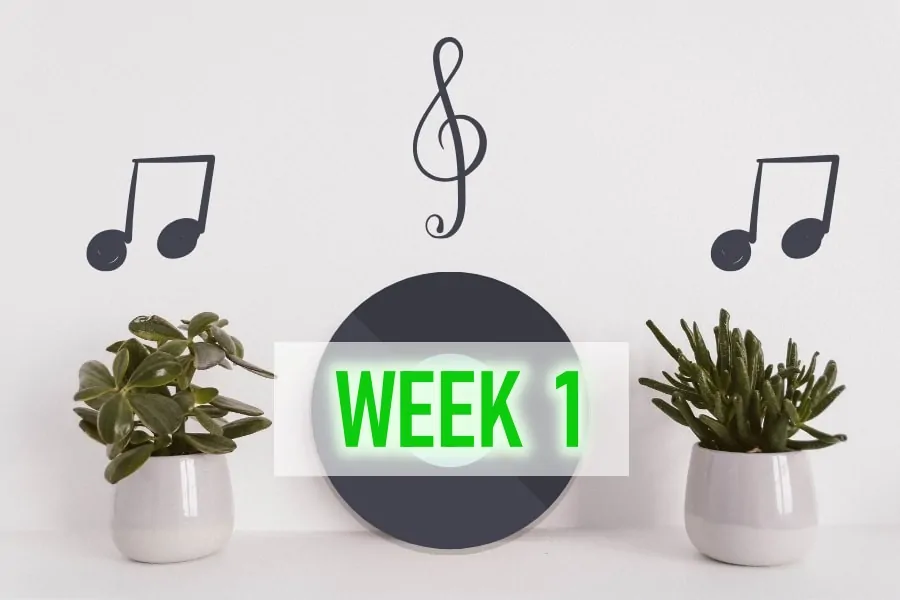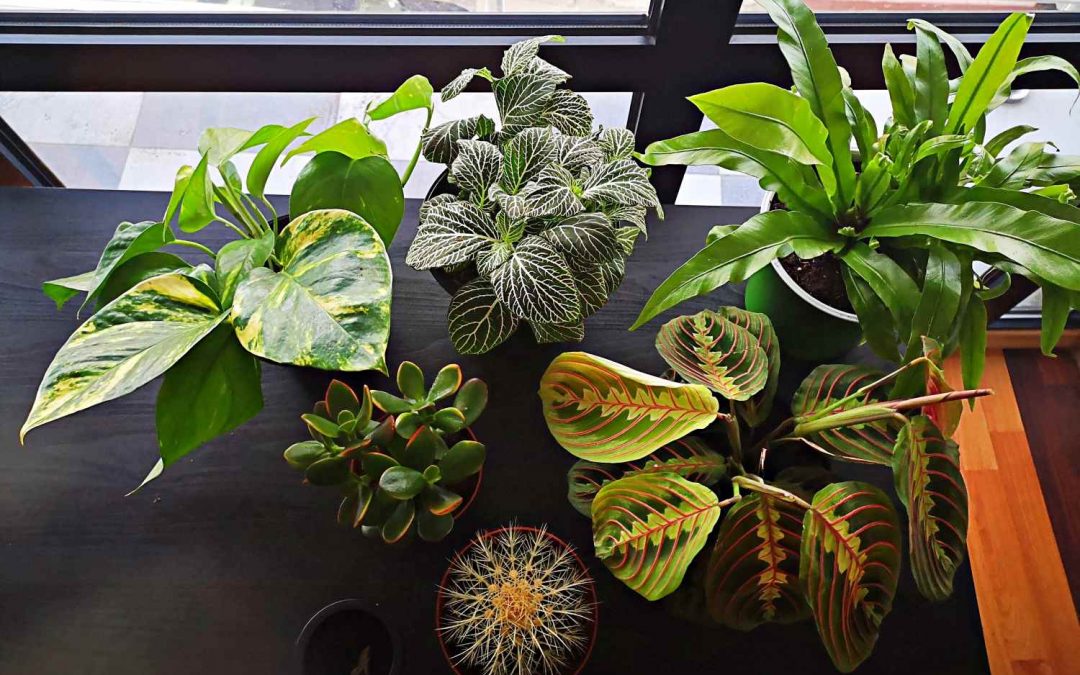


Welcome to our first update to our experiment on the best music for plants growth. In this article, on Classical and Rock Music for Plant Growth, we’re going to compare the first measurements we took before starting the experiment with the second set of measurements taken one week later.

Here is a summary of our findings.
| Asplenium Nidus | Fittonia Albivenis | Epipremnum Aureum | Maranta Leuconeura | Crassula Ovata | Echinocactus Grusonii | ||||||||||||||
|---|---|---|---|---|---|---|---|---|---|---|---|---|---|---|---|---|---|---|---|
| Rock | Classical | Control | Rock | Classical | Control | Rock | Classical | Control | Rock | Classical | Control | Rock | Classical | Control | Rock | Classical | Control | ||
| Day 1 (February 15) | Height | 7 | 6 | 8.5 | 5.5 | 4.5 | 5.5 | 8 | 8 | 9 | 7 | 7.5 | 9 | 5 | 4.7 | 4 | 3.8 | 3.8 | 4 |
| Leaf Count | 78 | 67 | 82 | 64 | 58 | 69 | 15 | 16 | 17 | 13 | 10 | 13 | 49 | 60 | 54 | - | - | - | |
| Plants | 3 | 2 | 3 | 7 | 10 | 9 | 5 | 6 | 5 | 4 | 3 | 5 | 3 | 3 | 3 | 1 | 1 | 1 | |
| Day 7 (February 22) | Height | 7 | 7 | 7.5 | 6 | 5 | 6.5 | 8 | 9 | 9.5 | 7 | 8 | 9 | 5 | 4.7 | 4 | 3.8 | 3.8 | 4 |
| Leaf Count | 78 | 76 | 91 | 65 | 65 | 69 | 16 | 16 | 18 | 14 | 13 | 13 | 48 | 59 | 56 | 0 | 0 | 0 | |
| Plants | 3 | 2 | 3 | 7 | 10 | 9 | 5 | 6 | 5 | 4 | 3 | 5 | 3 | 3 | 3 | 1 | 1 | 1 | |
Epipremnum are giving us mixed messages when it comes to the best music for plant growth, as follows:
Even though classical music seems to make plants thrive more than rock music, it also seems to promote leaf browning among plants that are sensitive to this (Aspleniums and Fittonias) according to what we noticed so far.
Stay tuned for our next update on music and plant growth!

Monthly updates on your favorite plants and how to keep them alive, delivered straight to your inbox!
Privacy Policy
This privacy policy outlines what info we gather from our visitors and contributors, the tools we use to collect, store, and protect it, and how we use this information.
Like any other website on the World Wide Web, YouHadMeAtGardening.com records some info about you and your device during your visit. This privacy policy outlines how our team gathers, stores, protects, and uses the information it gathers from visitors of the YouHadMeAtGardening.com website.
By continuing to use this website, you implicitly agree to this policy; if you do not agree to some or all of the procedures listed on this page, you can opt out at any time, however, you might not enjoy the intended browsing experience.
Our team reserves the right to alter this privacy policy with no prior notice to you. However, if the alterations made affect your personal data in any way, you will be notified immediately by email, on our homepage, or here.
Information YouHadMeAtGardening.com Collects
Our systems gather personally and non-personally identifiable information from visitors of the YouHadMeAtGardening.com website.
The only personally identifiable information we collect is your name and e-mail address only when leaving comments if you’re a visitor, or when submitting content and leaving comments, if you’re a contributor.
However, if you are not comfortable with providing your personally identifiable information to us, you can also use an alias instead of your real name and e-mail address without breaking any rules or regulations currently in use.
Note: If you submitted a comment using your personally-identifiable information and want it removed, you can always contact us and we will remove your info in 30 days.
The non-personally identifiable information we collect is your IP address, ISP information, device and browser info, and your browsing patterns – specifically the pages and websites you visit. This information cannot be used to track down your identity.
How We Collect Your Information
We use the following tools to gather personally and non-personally identifiable information from visitors and contributors:
• Cookies: these tiny text documents contain unique identifiers that are stored in your computer after your expressed consent. Cookies collect non-personally-identifiable information about your browsing patterns, which helps us pinpoint the areas of our website that require extra work and the areas that fully meet your needs.
• Log files: These tools record browser and device information, browsing patterns, websites that referred you to the YouHadMeAtGardening.com website, pages our website referred you to, and other types of non-personally identifiable information.
• Sign-up forms: these requests only come up when registering for our newsletter and is the only way our team collects personally-identifiable information from visitors.
How We Protect Your Information
All information we gather, both personally and non-personally identifiable, is stored in systems and databases managed only by the YouHadMeAtGardening.com team. We use the latest security measures to make sure the information you provide and the information we gather stays confidential, such as encryption, user behavior monitoring, and a series of managerial procedures.
How We Use Your Information
We only use your personally and non-personally identifiable information to improve the quality of the website and your browsing experience while here. We want to know which pages and sections of our website satisfy your needs and are of real value to you and which ones need improvement so we can make the proper adjustments. We also use your information to make sure the website is properly displayed on your device and browser.
If you choose to opt in for our newsletter, we will also use your information to keep in touch.
However, know that the YouHadMeAtGardening.com team will never share your information with other parties in exchange for financial rewards or any other kind of benefits. Some third parties might get very limited access to your info, but only to your non-personally identifiable information and only as we described above.
The personally identifiable information you provide is strictly confidential, therefore we will not share it with anyone.
Advertising
This Site is affiliated with CMI Marketing, Inc., d/b/a CafeMedia (“CafeMedia”) for the purposes of placing advertising on the Site, and CafeMedia will collect and use certain data for advertising purposes. To learn more about CafeMedia’s data usage, click here: www.cafemedia.com/publisher-advertising-privacy-policy
